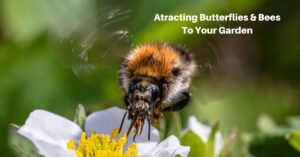Nematodes, often called roundworms, are a vast and diverse group of microscopic organisms that play dual roles in the environment, particularly gardening. These tiny, often invisible creatures can be both a boon and a bane. They may be silent allies in the fight against pests but can also be devastating adversaries to plant health. Understanding nematodes’ complex nature is crucial to fostering a healthy, thriving garden.
Understanding Nematodes
Nematodes are a phylum of worm-like organisms that inhabit various environments, from soil and sea to freshwater and even the polar regions. They have elongated, cylindrical bodies that, despite their simplicity, play significant roles in the ecological balance.
Nematodes can be broadly classified into beneficial and harmful categories based on their impact on soil health and plant vitality. Beneficial nematodes contribute to nutrient cycling and pest control. In contrast, their harmful counterparts, the plant-parasitic nematodes, can inflict severe damage on roots, ultimately affecting plant growth and yield.
Beneficial Nematodes
Beneficial nematodes are invaluable allies in gardening. These microscopic predators hunt down and control populations of soil-dwelling pests, including grubs, beetle larvae, and other harmful insects.
Beneficial nematodes help maintain the health and balance of garden ecosystems without chemical interventions by naturally regulating pest populations. For instance, species such as Steinernema carpocapsae and Heterorhabditis bacteriophora are widely used in biological pest control programs, targeting pests like the Japanese beetle larvae and black vine weevils, respectively.
Harmful Nematodes
On the other hand, harmful nematodes, particularly plant-parasitic ones, pose significant challenges to amateur gardeners and even professional agriculturists. These nematodes penetrate plant roots, siphoning off nutrients and water. This can lead to stunted growth, reduced yields, and, in severe cases, plant death.
Symptoms of nematode damage often include yellowing leaves, wilting, and root galls, particularly characteristic of root-knot nematode infestation. Root-knot nematodes, belonging to the genus Meloidogyne, are among the most notorious, affecting a wide range of vegetable and ornamental plants.
Identifying Nematode Problems
Diagnosing a nematode problem requires keen observation and sometimes laboratory analysis. Above-ground symptoms are often the first indicators. However, they can be misleading since they resemble distress caused by other factors like drought or nutrient deficiency. Therefore, confirming nematode presence typically involves examining the roots for galls or knots and soil testing.
Soil samples can be sent to agricultural extension offices or laboratories specializing in plant diseases for nematode analysis, providing gardeners with definitive answers and enabling targeted management strategies.
Managing Nematode Populations
Effective nematode management requires a multifaceted approach that enhances beneficial populations while controlling harmful ones. Here are key strategies for achieving this balance:
Strategies for Enhancing Beneficial Nematode Populations
- Organic Matter Management: Incorporating organic matter into the soil improves its structure, fertility, and moisture retention, creating an ideal environment for beneficial nematodes. Compost, well-rotted manure, and green manures provide food sources for these nematodes, encouraging their proliferation.
- Crop Rotation: Rotating crops can disrupt the life cycles of plant-parasitic nematodes, reducing their populations over time. Planting nematode-resistant or non-host crops in rotation with susceptible crops can starve harmful nematodes, indirectly boosting beneficial nematode activity by reducing competition.
- Polyculture and Companion Planting: Growing diverse plants can support a broader range of beneficial nematodes. Certain plants, like marigolds and mustard, have been shown to suppress harmful nematode populations, potentially due to the natural nematicides they release.
Methods for Controlling Harmful Nematode Infestations
- Soil Solarization: This non-chemical method involves covering the soil with clear plastic during the hottest part of the year to trap solar heat, effectively killing nematodes and other soilborne pests and pathogens.
- Biological Control: Introducing beneficial nematodes that prey on plant-parasitic nematodes naturally reduces harmful populations. You can apply products containing these beneficial nematodes directly to the soil.
- Nematicides: Although less favored due to environmental and health concerns, chemical nematicides may be used as a last resort under professional guidance to control severe nematode infestations.
Applying Beneficial Nematodes
Beneficial nematodes are a gardener’s ally against a variety of garden pests. Here’s how to apply them effectively:
- Purchasing: Obtain beneficial nematodes from reputable suppliers. They are usually sold in a dormant state, mixed with vermiculite or in a gel formulation.
- Storing: Follow the storage instructions carefully. Most beneficial nematodes should be kept refrigerated until ready to use.
- Application Timing: Apply beneficial nematodes either early in the morning or late in the afternoon to avoid direct sunlight, which can harm them. Moist soil conditions and moderate temperatures are ideal for application.
- Watering: Before and after application, ensure the soil is moist. This helps the nematodes move through the soil and reach their target pests.
- Follow-Up: Monitor the treated area for signs of pest reduction and reapply as necessary according to the product’s recommendations.
Preventative Measures and Soil Health
Maintaining a healthy soil ecosystem is fundamental to preventing nematode problems:
Soil Health: Regularly add organic matter to the soil to improve its structure, fertility, and microbial diversity, creating an unfavorable environment for harmful nematodes.
Sanitation: Remove and dispose of infected plant material promptly to prevent the spread of plant-parasitic nematodes.
Physical Barriers: Use row covers or plant collars to protect young plants from nematode invasion.
Future of Nematode Research
Advancements in nematode research continue to offer new insights into their management. Genetic engineering, microbial biopesticides, and enhanced biological control methods are being explored to provide more effective, sustainable solutions to nematode issues in agriculture and horticulture.
Understanding and managing nematodes in the garden is a complex but rewarding endeavor. By embracing integrated pest management practices, encouraging beneficial nematodes, and adopting sustainable soil health strategies, gardeners can protect their plants from nematode damage and support a vibrant, healthy garden ecosystem. As research progresses, we can expect to see even more innovative solutions to nematode challenges, further empowering gardeners in their ongoing land stewardship.









